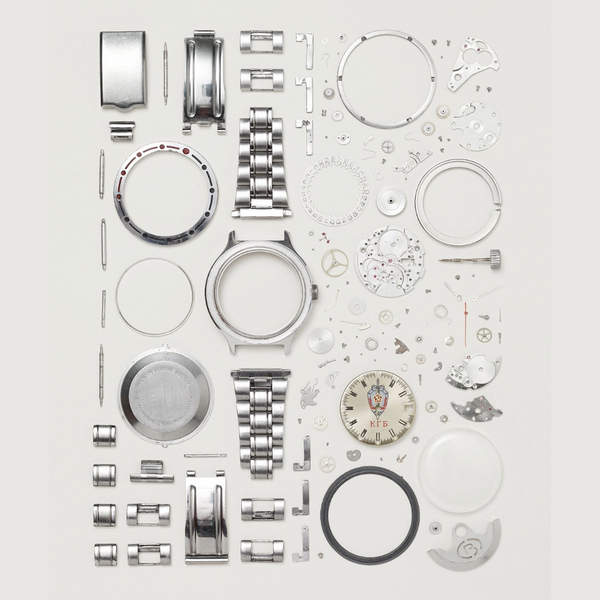No Products in the Cart

Watches, whether they are vintage classics or modern marvels, are intricate timekeeping instruments that combine artistry and engineering. Understanding the various parts and components that make up a watch can deepen your appreciation for these timeless pieces. In this glossary, we'll explore the anatomy of a watch, from the case to the movement, and introduce you to the terminology used in the horological world.
Case: The outer shell that protects the watch's internal components. Cases come in various shapes, including round, square, and rectangular. The case material can range from stainless steel for durability to precious metals like gold or platinum for luxury timepieces.
Crystal: The transparent cover over the watch face. Common materials include mineral glass, sapphire crystal, and acrylic. Sapphire crystal, known for its scratch resistance, is often found in high-end watches.
Dial: The watch face that displays the time. It features hour markers, hands, and often includes complications like date windows and subdials. The dial's design can vary from minimalist to intricate, reflecting the watch's style.
Hands: Thin, pointed indicators on the dial that move to indicate hours, minutes, and sometimes seconds. The shape and design of hands can contribute to a watch's aesthetic appeal.
Crown: A small knob on the side of the case that is used to set the time, date, and wind the watch. It's often adorned with the brand's logo and can have multiple positions for various functions.
Bezel: The ring that surrounds the crystal. It can be stationary or rotating and is often used for timing or as a decorative element. Rotating bezels are commonly found on dive watches for tracking elapsed time underwater.
Lug: Projections on each side of the case where the watch band or strap is attached. Lug width determines the type of band or strap that can be fitted to the watch.
Movement: The internal engine of the watch that powers its timekeeping functions. Movements can be mechanical, automatic, or quartz. Mechanical movements are admired for their craftsmanship and require manual winding.
Caliber: A specific model or type of movement produced by a watch manufacturer. Each caliber can have unique features and complications, making them distinct.
Complication: Any function on a watch beyond basic timekeeping, such as a chronograph, moon phase, or tourbillon. Complications showcase the watchmaker's expertise.
Power Reserve: The amount of time a watch can function without winding or movement. A longer power reserve indicates a watch that can keep ticking even if not worn daily.
Crown Guard: Protective elements around the crown to prevent damage. They come in various shapes and designs, adding both style and functionality.
Rotor: A part of an automatic movement that winds the mainspring by utilizing the wearer's wrist movements. It's a critical component in self-winding watches.
Lume: A luminescent material applied to the watch hands and markers for visibility in the dark. Quality lume ensures legibility during nighttime hours.
Subdial: A smaller dial within the main dial used for displaying additional information or complications. Subdials can show features like a second time zone or a moon phase.
Beating Heart: A term sometimes used to describe the balance wheel, a crucial part of the movement that oscillates back and forth to regulate time. It's the heartbeat of the watch.
Jewels: Small synthetic gemstones used as bearings in the movement to reduce friction. More jewels often indicate a higher-quality movement.
Escapement: A mechanism in the movement that controls the release of energy to the balance wheel, ensuring accurate timekeeping. It's the watch's escapement that makes the ticking sound.
Tourbillon: An intricate and mesmerizing complication that compensates for gravity's effect on the accuracy of a watch. Tourbillons are a pinnacle of watchmaking artistry.
Deployment Clasp: A type of watch band clasp that folds over to secure the watch on the wrist. It enhances comfort and ease of use when putting on or taking off the watch.
Understanding these watch anatomy terms is like learning the language of horology. It allows you to appreciate the craftsmanship that goes into creating these miniature marvels and can aid you in making informed choices when collecting or purchasing watches. So, next time you examine a watch, you'll not only see its beauty but also understand the intricate world beneath its dial.